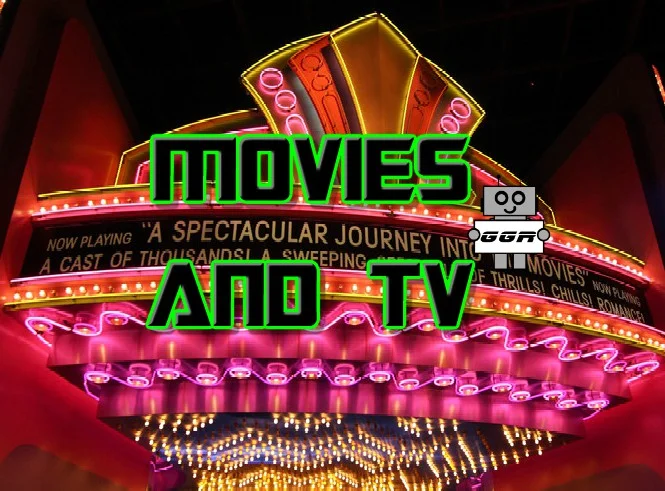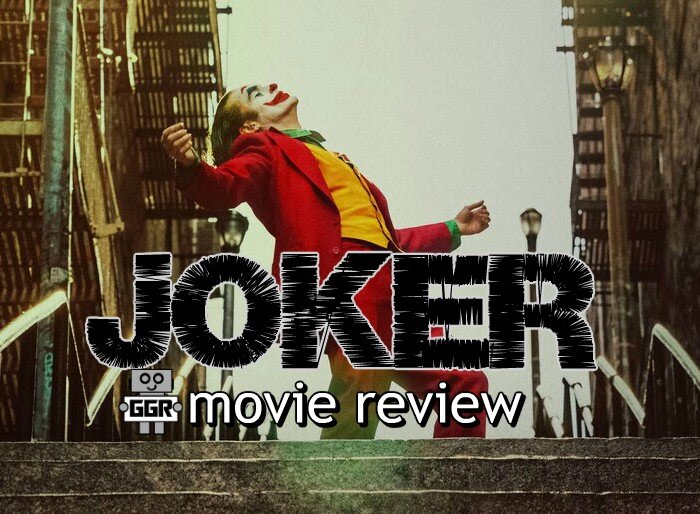Movie Review: Joker
by James Rambo, GGR Media Expert
Joker
Director: Todd Phillips
Screenwriters: Todd Phillips & Scott Silver
Starring: Joaquin Phoenix, Robert De Niro & Zazie Beetz
The original text of this review assumed that Arthur Fleck was not actually diagnosed in the film. Following conversation with other viewers and upon further reflection I have opted to adjust some of the writing to better discuss the film. While this has had little effect on the previous points made I do hope that it is a more accurate interpretation of Phillips’ film. Special thanks to Will Austin and Nina Osegueda for the discussion.
A couple of things you should know up top:
I didn’t care for this movie. I went into it hoping to be wrong about my preconceptions but here we are.
Upon hearing this film was announced, I thought it was a bad idea for a few reasons, primarily that the Joker as the #1 character that doesn’t need an origin story. I remain unconvinced otherwise.
There are gonna be spoilers in this review. Consider this your spoiler alert.
So, still with me? Wonderful! Let’s get into it.
I don’t hate this movie. Point of fact: there are more than a few elements that really work, namely Joaquin Phoenix’s performance as the lead, Arthur Fleck. I would not be surprised to see him get an Oscar nod or take home the trophy next year. Similarly, the score of the film by Hildur Guðnadóttir is beautiful and eerie, evocative and unsettling.
The movie is also wonderfully photographed by Lawrence Sher. The aesthetic reminded me of Bradford Young’s work in A Most Violent Year, another film about the brutality of a New York (like) City in the early 1980s. And the design of Joker in the 3rd act? He looks great! I think that’s a really well executed adaptation of that character design, particularly for a film as serious as this.
Sadly, though, great parts do not always coalesce into a great whole. There are a handful of other things, including brief performances by Zazie Beetz and Brian Tyree Henry, that are well done. Unfortunately this is a movie that is a lot of style and things that seem substantial on the surface but are mostly just elements improperly explored. Joker is a comic book movie that seems ashamed of its origins but still wants the credit for using a comic book character.
“We aren’t like other comic book movies, you guys! We’re different! Look at our desaturated colors and deliberate depth of focus!”
Arthur is a poor, mentally ill man living with his invalid mother in Gotham (NewYork) City during a garbage strike. He works as a rent-a-clown in a dirty, angry city, trying his best to bring “joy and laughter to the world.” Hell, he can’t even make a little kid laugh on the bus without getting yelled at, and that kid totally started it! He is a sympathetic character and you feel real empathy for him. “Ok,” you say, “What’s wrong with that? He’s the protagonist. Shouldn’t we be empathetic toward the lead?”
NOT WHEN THE LEAD IS THE JOKER.
Again, I hear you: “but he’s not the Joker yet!” Uh-huh. But he’s gonna be and we all know it. So, the empathy you feel for him now? It doesn’t just stop the second he kills somebody or does something else equally Joker-ish. It might diminish, sure, but there’s still a nugget there, a crumb of sadness on behalf of that character. And a character so simply and purely sadistic, violent, and lacking in conscience should not be allowed to inspire those feelings. It’s dangerous. It encourages people to find justification for the terrible actions of monsters and makes victims of them when their own victims fight back. It’s not uncivil to say you won’t be preyed upon anymore and to act accordingly but when the perpetrator has defenders, you’re made out to be “just as bad as they are.” Or worse.
As mentioned before Arthur is mentally ill. We never get a full, clear diagnosis but we know from him that he has constant terrible thoughts, that he feels like he’s “never felt happy a day in his whole life,” and that he’s on 7 different kinds of medication. Additionally, his uncontrollable laughing fits reflect a legitimate disorder, Pseudobulbar affect, which affects the expression, not experience, of emotions and we later learn that he had a traumatic brain disorder as a child. This brings me to the other big problem. Arthur’s lack of definitive diagnosis means he’s Mentally Ill. He’s the All-Crazy. As such, there isn’t a clear indication of what his particular psychosis can lead to if untreated and that further means his illness isn’t really being used to any meaningful degree. It’s a prop, an excuse to lead to the inevitable breakdown when his access to the city-sponsored social worker and medication is cut off, because as we all know the mentally ill are far more likely to commit violent acts than be the victims of them. What’s that? The truth is the exact opposite? Super-weird.
The lack of specificity about Arthur’s condition also means that he’s (intentional or not) representative of all those with mental illnesses. So when his lack of treatment leads to a killing spree the message the audience gets is “We need to take care of the crazies or they’re gonna start killing people!” I think it’s subtext that comes from a progressive place but is so lazily executed that it ends up being offensive.
“I’m Crazypants Bananashoes. I sure hope I keep getting my normal pills!”
Near the end of the film, a riot occurs outside of a movie theater. There’s a shot of the marquee and as the camera moves down we see The Waynes exiting the theater, terrified. They duck into an alley and there we get the inevitable murder of the parents in front of their son that will lead to Bruce becoming Batman. The movies on the theater marquee? Blow Out, Excalibur, and Zorro The Gay Blade. For anybody unaware it is long-held tradition that the movie the Waynes see with Bruce the night they die is 1940’s The Mark of Zorro starring Tyrone Power. Full of action and charm, Power’s Zorro would be inspiring for any child, let alone one seeking vengeance for the death of his parents (Seriously, go watch that movie.)
Initially I was pretty agitated by this. Why that Easter egg? If you don’t know the history of Batman you won’t even notice the title. It’s only if you do that it clicks. So why choose the silly, homophobic comedy that features George Hamilton running around as a cartoonish gay stereotype of the hero? At best it’s a goofy joke that’s a distraction during the narrative climax of a very self-serious film and at worst it’s a juvenile jab aimed squarely at comic book fans.
In discussing the movie, a friend of mine pointed out that all those movies came out in 1981. That year is on record as having some of the highest reported incidents of violent crime in New York (Gotham) City (not coincidentally the same setting for the previously mentioned A Most Violent Year.) That tells me two things. The first is that I’m probably wrong in my initial assumption that Phillips is taking a swing at comic book fans — the movies on the marquee are more likely there to act as a touchstone to tell you relatively when this is taking place. The second, though, is much worse than my initial reaction, and that’s that it doesn’t really matter. Aside from setting a year and it being a Zorro movie, there was probably little concern as to its significance. It was carelessly chosen for functionality without being given any greater consideration as a symbol. That is lazy filmmaking.
While doing press for the movie Robbie Collin, film critic for The Telegraph, asked Phoenix, “Aren’t you worried that this film might perversely end up inspiring exactly the kind of people it’s about, with potentially tragic results?” Phoenix muttered “Why? Why would you…? No, no,” before abruptly walking out of the interview. After an hour of negotiation he returned and the interview continued, with Phoenix saying he panicked because he hadn’t considered the question. He never provides an answer. That the lead actor didn’t stop to consider the larger implications of the film he’s making is emblematic of the simplest and most obvious issue with this movie: the focus was on small details and not the big picture. It’s a bad meal made up of wonderful elements that never come together right.




